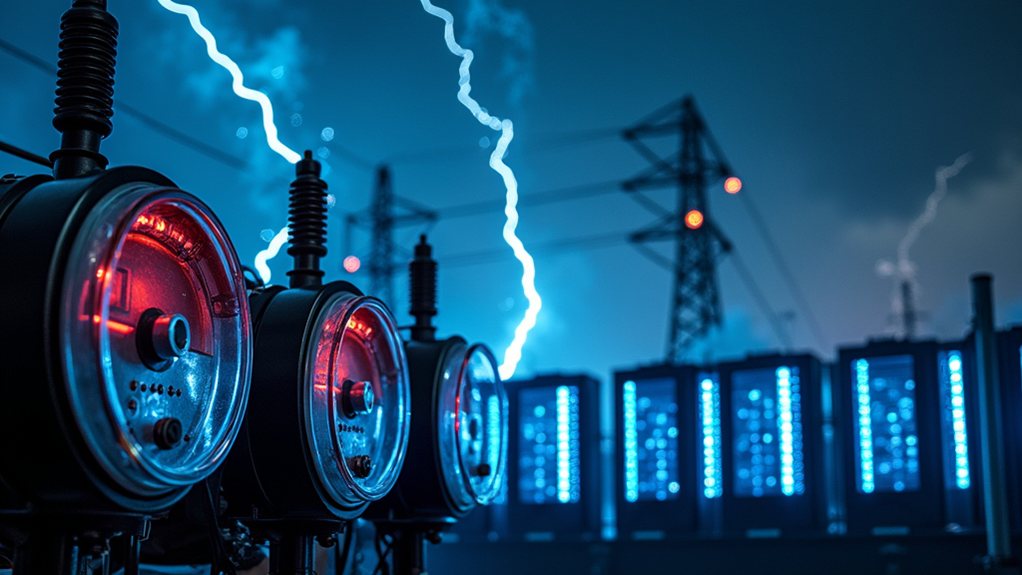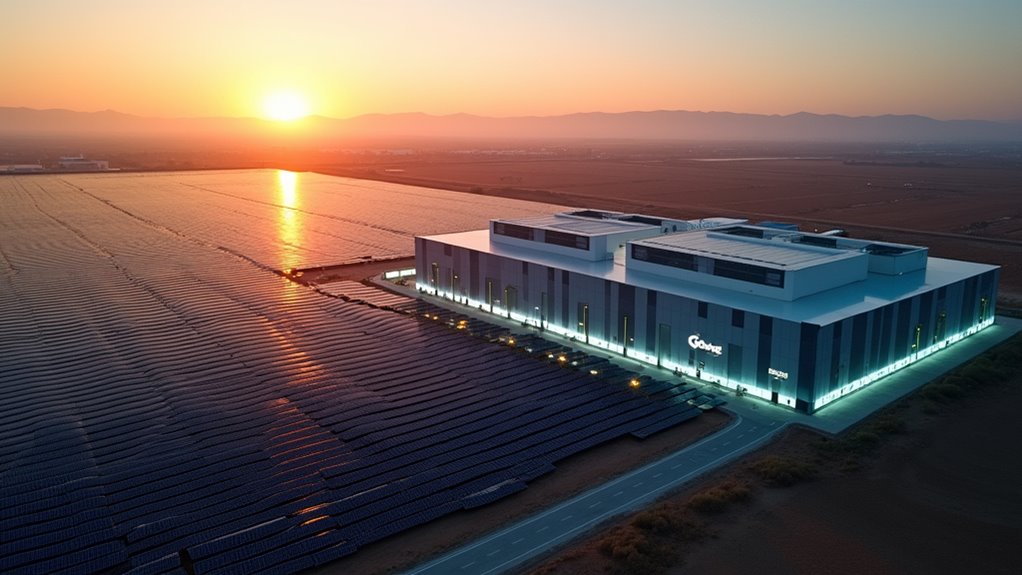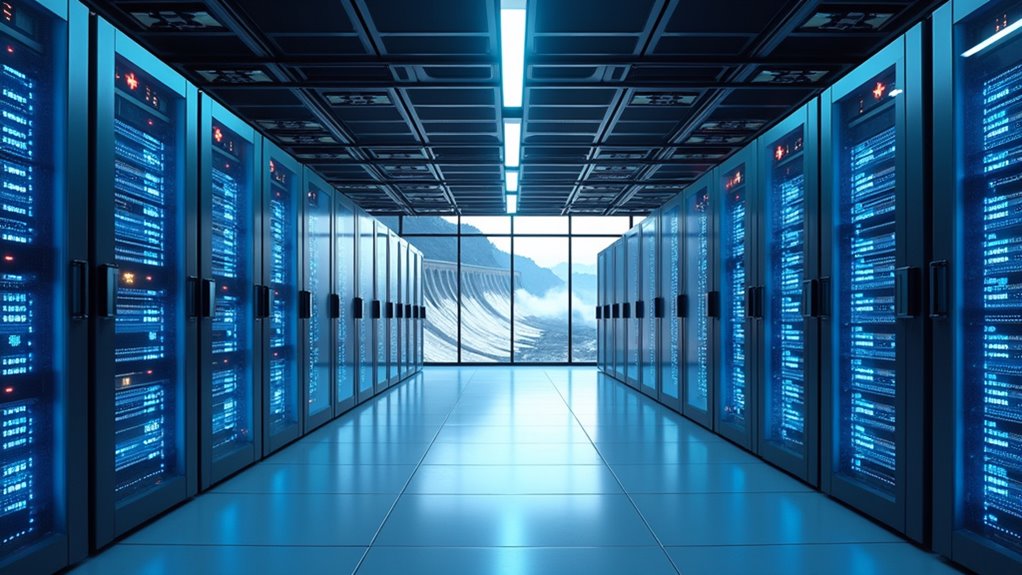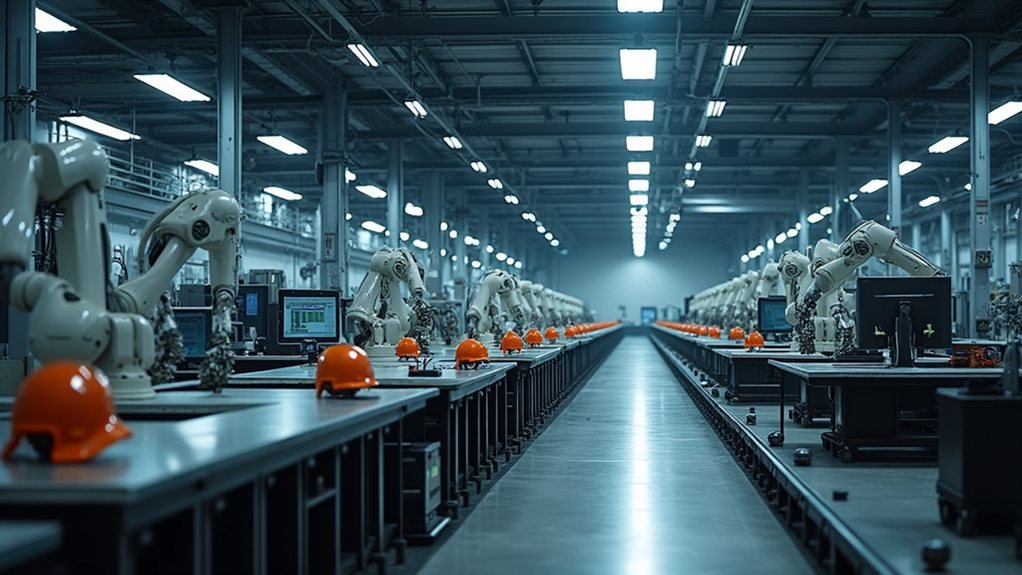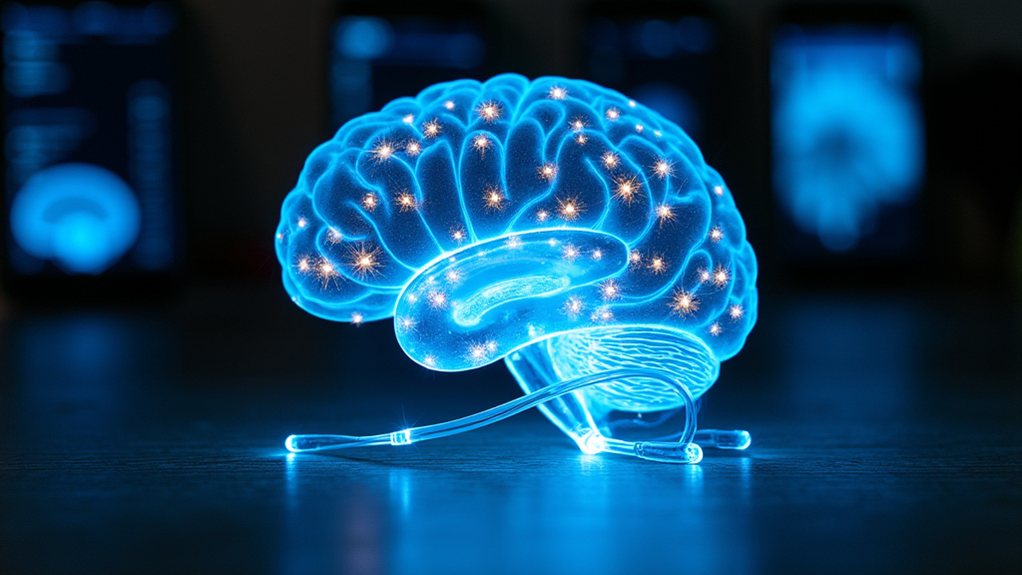The AI revolution is about to hit your wallet harder than a surprise streaming subscription. Data centers powering artificial intelligence are projected to consume 20-40% more electricity in 2025 alone, with global demand potentially reaching 1,500 TWh by 2030—equivalent to India’s entire electrical grid. This surge means millions of Americans will face steeper monthly bills as utilities scramble to meet unprecedented power demands that could consume up to 20% of all U.S. electricity by 2032, fundamentally reshaping how we pay for the digital future unfolding around us.
The digital revolution has an appetite, and it’s getting hungrier by the day. Artificial intelligence isn’t just transforming how we work and live—it’s fundamentally reshaping America’s power grid, one server farm at a time.
The numbers are staggering. AI data centers could demand an additional 10 gigawatts of power capacity in 2025 alone, surpassing Utah’s entire electrical infrastructure. Think about that for a moment: we’re talking about powering an entire state just to keep ChatGPT and its digital cousins running smoothly.
Global projections paint an even more dramatic picture. By 2027, worldwide AI data center power demand may hit 68 GW—nearly matching California’s total capacity in 2022.
Meanwhile, AI-related servers have exploded from a modest 2 TWh in 2017 to 40 TWh in 2023, a twenty-fold increase that shows no signs of slowing.
The ripple effects are already hitting your monthly bills. U.S. data center power demand could surge 20-40% in 2025, with persistent double-digit growth projected through 2030.
*By 2032, these digital powerhouses could consume between 7-20% of all U.S. electricity*, depending on how aggressively AI adoption continues.
Here’s where it gets really wild: OPEC projects global data center electricity use could triple to 1,500 TWh by 2030. That’s equivalent to India’s current total consumption—the world’s third-largest electricity consumer.
Data centers are actually outpacing electric vehicles in power hunger, with projections showing 1.5× more electricity usage than EVs by 2030.
The infrastructure strain is becoming critical. Forecasted demand risks overwhelming U.S. power grids, requiring massive upgrades and new power sources. Companies are already experiencing 4-7 years of waiting just to connect new facilities to the grid in places like Virginia.
Failure to secure adequate energy supplies may push American companies to build data centers abroad, potentially compromising national AI competitiveness.
Efficiency improvements offer some hope. New AI-specific chips and algorithms are reducing energy per computation, with companies like Ant Group reporting 20% savings. However, cybersecurity measures and unusual activity detection systems require additional verification processes that can temporarily disrupt access to these energy-intensive systems.
With the global AI market projected to reach $1.85 trillion by 2030, these energy demands will only intensify as more businesses integrate AI into their operations.
However, the massive growth in AI usage continues outpacing these technological gains, keeping total energy demand climbing relentlessly upward.
The digital appetite keeps growing, and we’re all paying to feed it.
